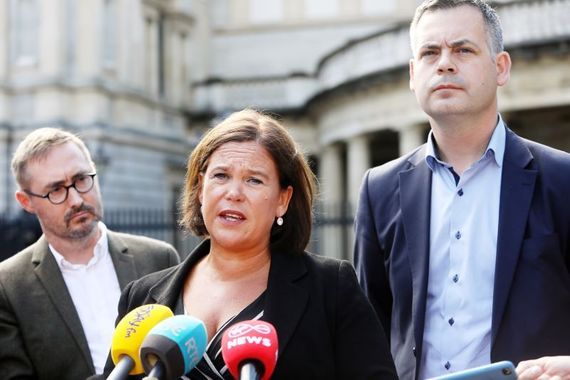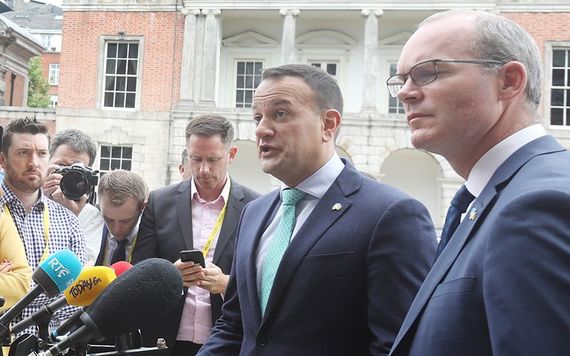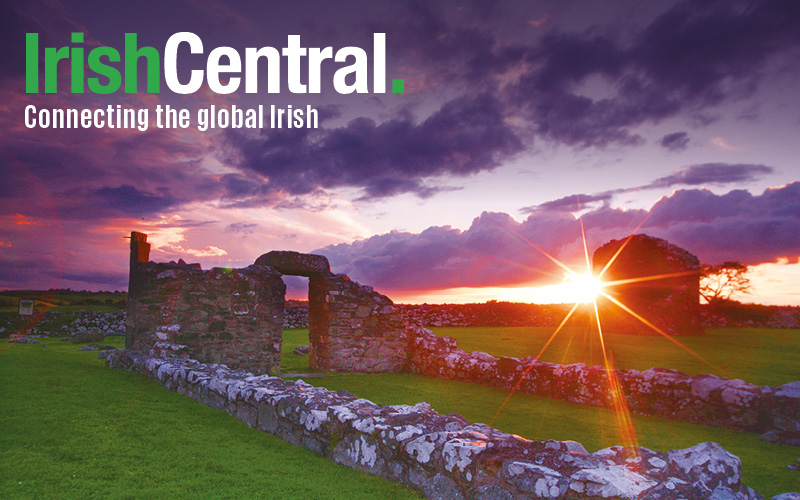There was endless talk here during the election about "change." It's more than a week now since the inconclusive election result and we're still trying to work out exactly what kind of change we're going to get if any.
Will it be a radical left wing government? Or a centrist government like we've always had?
The degree of change will depend on what kind of coalition can be worked out between the parties. The Dail meets for the first time since the election on Thursday of this week and the process of forming a new government will begin. That could take weeks as the negotiating between the parties to work out an agreed policy program for a new administration takes place.
Read more: A Fianna Fáil Sinn Féin coalition is Ireland’s best choice
There is a strong desire among some voters for a different approach. This need for change became the theme of the election, a feeling among a section of the voters that they wanted to move away from the kind of government provided by Fine Gael and Fianna Fail, the two big parties which have dominated Irish politics for so long.
Again and again, we were told by Sinn Fein and the left during the campaign that the two big parties were out of touch, that their failure to deal with housing, the health service and the cost of living demonstrated this. They were out of touch, or they didn't care, or both.

Eoin Ó Broin, Mary Lou McDonald and Pearse Doherty from Sinn Féin.
It didn't matter that the economy was doing well and we have full employment, too many ordinary people were stressed and struggling. An alternative kind of government that would put people first was needed.
As you will know by now, the big beneficiaries of that desire for change was Sinn Fein. They had a major breakthrough in the election, moving from the fringes of Irish politics to becoming the equal of the two main parties.
In fact, Sinn Fein got marginally more votes than either Fianna Fail or Fine Gael -- they got 24.5 percent, Fianna Fail got 22.2 percent and Fine Gael got 20.9 percent. This has led Sinn Fein to claim that they won the election, even though the reality is that the result was a virtual tie between the three of them.
Read more: New IRA group plan bomb attacks on Sinn Féin members
Sinn Fein's 24.5 percent of the votes means that three out of four voters did not support them or their call for change. Even if you add in the votes of the small left wing parties and the independents who support a change platform, it still does not go beyond 30 percent. That means that 70 percent of the voters did not support the call for radical change.
It's important to keep that reality in mind as the negotiations to form a new government takes place. Because of the inconclusive election result -- a quarter of the votes each to Sinn Fein, Fianna Fail and Fine Gael with the final quarter divided between the small parties and a very disparate group of independents - there is no obvious winner. Some kind of broad coalition has to be formed.

Finne Gael leaders Leo Varadkar and Simon Coveney.
Despite the Sinn Fein claim that they "won the election" and that "the people voted for change" (by which they mean a left-wing government) the numbers to do that simply do not add up. Sinn Fein had hoped that they could assemble a coalition between themselves, the Greens, the smaller parties and left wing independents -- but even if that had succeeded they would still be short of a majority in the Dail. The decision by Labour last week to remain in opposition put a decisive end to any hope of a left leaning coalition.
That means that Sinn Fein needs either Fianna Fail or Fine Gael to join them in a coalition (with added support from some of the smaller parties) to have a majority. But both Fianna Fail and Fine Gael have ruled out a coalition with Sinn Fein for a number of reasons, including their extravagant tax and spend economic policies and concerns that they are not a normal democratic party because they are still heavily influenced or even controlled by senior figures in the IRA.
If that remains the position -- and there is no reason to think that either Fianna Fail or Fine Gael will change their minds -- then the only realistic possibility of a stable majority government is one that will see the so-called grand coalition between Fianna Fail and Fine Gael, with added support probably from the Greens.
If that does happen it will be a revolutionary change in Irish politics, much more of a revolution than anything promised by the arrival of Mary Lou McDonald's Sinn Fein on the main political stage here in the south. It will mean that at long last we will see the beginning of the end of Civil War politics in Ireland, the old division that goes right back to the foundation of the state.
And it could not come at a more perfect time as we mark the centenary of that period, the War of Independence, the Treaty, the foundation of the Free State and the Civil War (the years between 1919 and 1923).
Read more: Bertie Ahern says a United Ireland is 'possible' this decade
In the last week, some commentators here have referred to the Sinn Fein emergence in this election as a historic development. But much more significant would be this final healing of the division caused by the Treaty, partition and the Civil War.
The opposing sides in that bitter war had been comrades in the original Sinn Fein and eventually, a decade or so later, became the Fine Gael and Fianna Fail parties. (It is worth remembering that there is little or no connection between that original Sinn Fein a century ago and the current version of Sinn Fein which dates from 1970.)
Fianna Fail, which has always called itself the Republican Party, grew out of the anti-Treaty side in the Civil War. Because of that background, there was some expectation after this election that it might be open to coalition with Sinn Fein.
But Fianna Fail leader Micheal Martin has ruled that out and has given detailed reasons for doing so, reasons that explain why Sinn Fein are not yet acceptable as a government party in our democracy and why their economic policies could wreck the country.
Martin's refusal to enter coalition talks with Sinn Fein, a decision supported by his party, has provoked fury from McDonald. She calls it an insult to all the people who voted for change and says that a Fianna Fail-Fine Gael led coalition cannot be seen as the change that people want. She says Sinn Fein won more votes in the election than Fianna Fail and that Martin's position is "arrogant."
She says a grand coalition would be just more of the same failed policies that the last government led by Fine Gael and supported by Fianna Fail had pursued. No one could call that "change," she says.
And a minority of voters, including the 25 percent who voted for Sinn Fein in the election, will agree with her. But the 70 percent of voters who do not want a left wing government led by Sinn Fein, or any kind of government that included Sinn Fein, will take the other view.
It's also a bit simplistic to presume that a grand coalition between Fianna Fail and Fine Gael, supported by the Greens, would be exactly like the last government. For a start, Fianna Fail would be the dominant partner and its policies are more socially concerned than those of Fine Gael.
It would mean far more spending on housing and health, the two big issues in the election. There would be less emphasis on tax cuts and more concentration on improving public services and dealing with the problems like child care costs and commuting that are stressing so many people.
Even so, the emergence of a grand coalition government led by Fianna Fail and Fine Gael would be a shock to many voters, even some non-Sinn Fein voters who liked the idea of "change" and a different way of prioritizing how the country is run.
In time, however, they might come to accept the idea, particularly if it is presented to them in the right way. And they are likely to have plenty of time to do so, since it may take not just weeks but months to negotiate such a government.
If a grand coalition does emerge, then Fianna Fail and Fine Gael are likely to present it as a kind of national government to deal with the emergency in housing and health. It would be launched with the announcement of a detailed emergency program to deal with the reasons so many voters are dissatisfied, particularly an accelerated program of house building costing billions of euro to deal with the housing shortage as quickly as possible.
It might also include further restrictions on rent increases, possibly even a rent freeze. And it is likely to see vast amounts of money being poured into the health services.
In other words, what Fianna Fail and Fine Gael would do is steal some of the populist clothes worn by Sinn Fein in the election, while still maintaining a degree of control on spending and borrowing. That would assuage much of the concerns of the people who voted for "change," especially the soft middle-class supporters (now being called the Posh Provos) who thought Sinn Fein should be given a chance.
But we're nowhere near the formation of a grand coalition yet. Fine Gael says it will only consider doing so if there is no other possibility of forming a government. Many Fianna Fail members are dubious. Meanwhile, the spurned Sinn Fein waits in hope of getting in on the action. It's still all to play for.
Read more: Irish general election a Sinn Féin con job




Comments